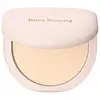What's inside
What's inside
 Key Ingredients
Key Ingredients

 Benefits
Benefits

 Concerns
Concerns

 Ingredients Side-by-side
Ingredients Side-by-side

Mica
Cosmetic ColorantSilica
AbrasiveCapryloyl Glycerin/Sebacic Acid Copolymer
Skin ConditioningLauroyl Lysine
Skin ConditioningGlyceryl Stearate
EmollientOctyldodecanol
EmollientSimmondsia Chinensis Seed Oil
EmollientPentylene Glycol
Skin ConditioningGlycerin
HumectantGlyceryl Caprylate
EmollientPotassium Sorbate
PreservativeBambusa Arundinacea Stem Powder
AbrasivePassiflora Edulis Seed Oil
EmollientGlyceryl Undecylenate
EmollientWater
Skin ConditioningStearic Acid
CleansingCandelilla Cera
EmollientXanthan Gum
EmulsifyingSodium Phytate
Cetearyl Olivate
Tocopherol
AntioxidantSorbitan Olivate
EmulsifyingHonokiol
AntioxidantPaeonia Officinalis Flower Extract
TonicHelianthus Annuus Seed Oil
EmollientVitis Vinifera Seed Extract
AntimicrobialCI 77491
Cosmetic ColorantCI 77492
Cosmetic ColorantCI 77499
Cosmetic ColorantMica, Silica, Capryloyl Glycerin/Sebacic Acid Copolymer, Lauroyl Lysine, Glyceryl Stearate, Octyldodecanol, Simmondsia Chinensis Seed Oil, Pentylene Glycol, Glycerin, Glyceryl Caprylate, Potassium Sorbate, Bambusa Arundinacea Stem Powder, Passiflora Edulis Seed Oil, Glyceryl Undecylenate, Water, Stearic Acid, Candelilla Cera, Xanthan Gum, Sodium Phytate, Cetearyl Olivate, Tocopherol, Sorbitan Olivate, Honokiol, Paeonia Officinalis Flower Extract, Helianthus Annuus Seed Oil, Vitis Vinifera Seed Extract, CI 77491, CI 77492, CI 77499
Synthetic Fluorphlogopite
CI 77220
Cosmetic ColorantZinc Stearate
Cosmetic ColorantIsononyl Isononanoate
EmollientMagnesium Myristate
Oryza Sativa Bran Wax
Skin ConditioningSilica
AbrasiveDimethicone
EmollientBoron Nitride
AbsorbentMicrocrystalline Cellulose
AbsorbentEthylhexylglycerin
Skin ConditioningMica
Cosmetic ColorantSorbic Acid
PreservativeDimethicone/Vinyl Dimethicone Crosspolymer
Skin ConditioningTocopherol
AntioxidantHelianthus Annuus Seed Oil
EmollientCI 77492
Cosmetic ColorantCI 77491
Cosmetic ColorantCI 77499
Cosmetic ColorantCI 42090
Cosmetic ColorantCI 77742
Cosmetic ColorantCI 77891
Cosmetic ColorantCI 77007
Cosmetic ColorantCI 19140
Cosmetic ColorantSynthetic Fluorphlogopite, CI 77220, Zinc Stearate, Isononyl Isononanoate, Magnesium Myristate, Oryza Sativa Bran Wax, Silica, Dimethicone, Boron Nitride, Microcrystalline Cellulose, Ethylhexylglycerin, Mica, Sorbic Acid, Dimethicone/Vinyl Dimethicone Crosspolymer, Tocopherol, Helianthus Annuus Seed Oil, CI 77492, CI 77491, CI 77499, CI 42090, CI 77742, CI 77891, CI 77007, CI 19140
 Reviews
Reviews

Ingredients Explained
These ingredients are found in both products.
Ingredients higher up in an ingredient list are typically present in a larger amount.
Ci 77491 is also hydrated iron III oxide. It's sole purpose is to give a red/pink hue to products.
Iron III oxides are classified as inorganic chemicals for coloring.
Synthetically created Ci 77491 is considered safer than those naturally found. This is because the synthetically created version may contain less impurities. Iron oxides are generally non-toxic and non-allergenic.
Learn more about CI 77491Ci 77492 is also hydrated iron III oxide. It's sole purpose is to give a yellow hue to products.
Iron III oxides are classified as inorganic chemicals for coloring.
Synthetically created Ci 77492 is considered safer than those naturally found. This is because the synthetically created version may contain less impurities. Iron oxides are generally non-toxic and non-allergenic.
Learn more about CI 77492Ci 77499 is also hydrated iron III oxide. It is created from mixing red and black iron oxides. This helps give shades of darkness to a product.
Iron III oxides are classified as inorganic chemicals for coloring.
Helianthus Annuus Seed Oil is the oil derived from the seeds of a Sunflower. Sunflower seed oil is non-fragrant. It is an emollient, meaning it helps to soften the skin.
Sunflower seed oil contains many fatty acids. The fatty acids found in sunflower seeds include (from highest amount to least): linoleic acid, myristic acid, palmitic acid, stearic acid, arachidic acid, oleic acid, and linolenic acid.
These fatty acids help the skin create ceramides. Ceramides play a role in repairing the skin barrier.
Helianthus Annuus Seed Oil helps moisturize the skin. This in turn helps the skin look more rejuvenated and smoother.
Sunflowers are rich in vitamin E.
Historians believe Indigenous cultures of North America domesticated sunflowers before corn. Thus they relied on sunflower oil for a variety of uses. One such use is moisturizing skin and hair.
Sunflower seed oil may not be fungal acne safe. We recommend speaking with a professional if you have any concerns.
Learn more about Helianthus Annuus Seed OilMica is a naturally occurring mineral used to add shimmer and color in cosmetics. It can also help improve the texture of a product or give it an opaque, white/silver color.
Serecite is the name for very fine but ragged grains of mica.
This ingredient is often coated with metal oxides like titanium dioxide. Trace amounts of heavy metals may be found in mica, but these metals are not harmful in our personal products.
Mica has been used since prehistoric times throughout the world. Ancient Egyptian, Indian, Greek, Roman, Aztec, and Chinese civilizations have used mica.
Learn more about MicaSilica, also known as silicon dioxide, is a naturally occurring mineral. It is used as a fine, spherical, and porous powder in cosmetics.
Though it has exfoliant properties, the function of silica varies depending on the product.
The unique structure of silica enhances the spreadability and adds smoothness, making it a great texture enhancer.
It is also used as an active carrier, emulsifier, and mattifier due to its ability to absorb excess oil.
In some products, tiny microneedles called spicules are made from silica or hydrolyzed sponge. When you rub them in, they lightly polish away dead skin layers and enhance the penetration of active ingredients.
Learn more about SilicaTocopherol (also known as Vitamin E) is a common antioxidant used to help protect the skin from free-radicals and strengthen the skin barrier. It's also fat soluble - this means our skin is great at absorbing it.
Vitamin E also helps keep your natural skin lipids healthy. Your lipid skin barrier naturally consists of lipids, ceramides, and fatty acids. Vitamin E offers extra protection for your skin’s lipid barrier, keeping your skin healthy and nourished.
Another benefit is a bit of UV protection. Vitamin E helps reduce the damage caused by UVB rays. (It should not replace your sunscreen). Combining it with Vitamin C can decrease sunburned cells and hyperpigmentation after UV exposure.
You might have noticed Vitamin E + C often paired together. This is because it is great at stabilizing Vitamin C. Using the two together helps increase the effectiveness of both ingredients.
There are often claims that Vitamin E can reduce/prevent scarring, but these claims haven't been confirmed by scientific research.
Learn more about Tocopherol